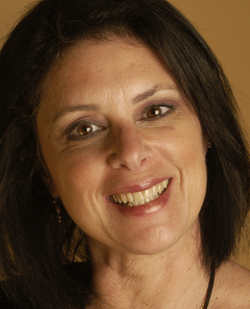We have a diverse membership in DAASE, most are interior designers who have a certain expertise in helping people to design spaces that are accessible and sustainable, no matter age or ability. And to get to know our members, we implemented our Member Showcase: 5 Questions + 5 Minutes. In this series, you'll learn a bit more about our members and their passion, their background and their philosophies.... starting with DAASE member: Leslie Shankman-Cohen, ASID, NCIDQ, CAPS.
• Enjoy these 5 questions + 5 minutes
• Enjoy these 5 questions + 5 minutes
 Leslie Shankman-Cohn, ASID, NCIDQ, CAPS
Leslie Shankman-Cohn, ASID, NCIDQ, CAPS (1) At what point in your life did you discover an interest in your current profession ?
I grew up in this profession, my mother was a professional Interior Designer and my father was a Custom Builder, so I guess I was born to be a designer!
(2) Why do you believe that accessible and sustainable design is such an important concept?
We start aging from the day we are born, some of us faster than others. Even if the issues are not always about aging, the solutions are many times a crossover from the different perspectives of difficulties. For example, an elderly woman might have difficulty getting into her front door while carrying a bag of groceries; and conversely, a young mother might have difficulty entering her front door while trying to maneuver a stroller and having a toddler in tow. If homes were universally accessible, these issues would be minimized, as well as the temporary issues some of us encounter with injuries or surgeries, etc.
Additionally, as we know, sustainable design and accessible design go hand in hand and can't really be extrapolated form one another. Good design using both of these principals will develop better housing stock; less waste in remodeling; viable communities; higher revenue for cities because of better housing stock; and on and on....
(3) What is the biggest single challenge in the implementation of accessible, sustainable design?
I call it the "Cleopatra Syndrome" because most people are in "de-nile"! Seriously, denial about their aging and health issues is a very difficult barrier to break through. Once that is overcome, it is difficult to get past the perceived monetary issues; for example, "Why should I go to any extra expense (even though, realistically, there is usually minimal additional expense) to pay for something now that may or may not be needed until the future?".
It is also difficult to explain and grasp the concept of Life-cycle analysis: the TRUE cost of something when ALL factors are accounted for (It might cost more on the front end initially, but you save money in the long run).
(4) Considering your clients, what are some of the benefits of "staying in place” you have observed?
An improved sense of independence, self-confidence and self-esteem.
(5) If not this profession, then what other profession or career have you ever contemplated?
I really don't think I would stray far, as design is my passion, but if I had the opportunity I am intrigued with all things connected to Urban Design and City Planning.
I grew up in this profession, my mother was a professional Interior Designer and my father was a Custom Builder, so I guess I was born to be a designer!
(2) Why do you believe that accessible and sustainable design is such an important concept?
We start aging from the day we are born, some of us faster than others. Even if the issues are not always about aging, the solutions are many times a crossover from the different perspectives of difficulties. For example, an elderly woman might have difficulty getting into her front door while carrying a bag of groceries; and conversely, a young mother might have difficulty entering her front door while trying to maneuver a stroller and having a toddler in tow. If homes were universally accessible, these issues would be minimized, as well as the temporary issues some of us encounter with injuries or surgeries, etc.
Additionally, as we know, sustainable design and accessible design go hand in hand and can't really be extrapolated form one another. Good design using both of these principals will develop better housing stock; less waste in remodeling; viable communities; higher revenue for cities because of better housing stock; and on and on....
(3) What is the biggest single challenge in the implementation of accessible, sustainable design?
I call it the "Cleopatra Syndrome" because most people are in "de-nile"! Seriously, denial about their aging and health issues is a very difficult barrier to break through. Once that is overcome, it is difficult to get past the perceived monetary issues; for example, "Why should I go to any extra expense (even though, realistically, there is usually minimal additional expense) to pay for something now that may or may not be needed until the future?".
It is also difficult to explain and grasp the concept of Life-cycle analysis: the TRUE cost of something when ALL factors are accounted for (It might cost more on the front end initially, but you save money in the long run).
(4) Considering your clients, what are some of the benefits of "staying in place” you have observed?
An improved sense of independence, self-confidence and self-esteem.
(5) If not this profession, then what other profession or career have you ever contemplated?
I really don't think I would stray far, as design is my passion, but if I had the opportunity I am intrigued with all things connected to Urban Design and City Planning.
• ABOUT: Leslie Shankman-Cohn, ASID, CAPS, CGP is a partner in the firm of Jill Hertz Interior Design, a division of Eclectic Interiors located in Memphis, TN. She specializes in custom designed furniture; space planning; furnishings and finishes specifications; universal design; “Aging in Style”sm; and sustainable design issues.
Ms. Shankman-Cohn is a Registered Interior Designer by the State of Tennessee; NCIDQ (National Council of Interior Design Qualifications) certified; a Professional member of the American Society of Interior Designers (ASID); a Certified Aging in Place Specialist (CAPS); and a Certified Green Professional (CGP). She is a Past- President of the Tennessee Chapter of ASID, and the 2014 President-Elect of the Tennessee Interior Design Coalition (TIDC). Besides being on the boards of two local non-profit environmental groups, she has served on the ASID’s national committee on “Aging in Place”, and has been involved in “Redesigning for an Aging America “, a local consortium focusing the future of Memphis’ city planning and social services.
Ms. Shankman-Cohn was appointed by the governor of Tennessee in 2008 as the Interior Design representative on the Board of Architectural and Engineering Examiners for the State of Tennessee, where she served until the end of July 2012. In addition, she was the Tennessee Delegate to the NCIDQ National Board and sits on one of their national task forces. Leslie is currently involved with the Plough Foundation of Memphis as an advisor for their Aging in Place and Livable Community initiative.
In addition to presenting continuing education programs to other professionals, writing articles for different publications, and giving lectures to various groups throughout the nation, Leslie has been interviewed on TV, radio, in local and national newspapers, magazines, and on the web. Her work has been featured in the book, Spectacular Homes of Tennessee, and the recently released Aging In Place Gracefully.
• For more information about Leslie: visit: www.jillhertz.com
Ms. Shankman-Cohn is a Registered Interior Designer by the State of Tennessee; NCIDQ (National Council of Interior Design Qualifications) certified; a Professional member of the American Society of Interior Designers (ASID); a Certified Aging in Place Specialist (CAPS); and a Certified Green Professional (CGP). She is a Past- President of the Tennessee Chapter of ASID, and the 2014 President-Elect of the Tennessee Interior Design Coalition (TIDC). Besides being on the boards of two local non-profit environmental groups, she has served on the ASID’s national committee on “Aging in Place”, and has been involved in “Redesigning for an Aging America “, a local consortium focusing the future of Memphis’ city planning and social services.
Ms. Shankman-Cohn was appointed by the governor of Tennessee in 2008 as the Interior Design representative on the Board of Architectural and Engineering Examiners for the State of Tennessee, where she served until the end of July 2012. In addition, she was the Tennessee Delegate to the NCIDQ National Board and sits on one of their national task forces. Leslie is currently involved with the Plough Foundation of Memphis as an advisor for their Aging in Place and Livable Community initiative.
In addition to presenting continuing education programs to other professionals, writing articles for different publications, and giving lectures to various groups throughout the nation, Leslie has been interviewed on TV, radio, in local and national newspapers, magazines, and on the web. Her work has been featured in the book, Spectacular Homes of Tennessee, and the recently released Aging In Place Gracefully.
• For more information about Leslie: visit: www.jillhertz.com

 RSS Feed
RSS Feed